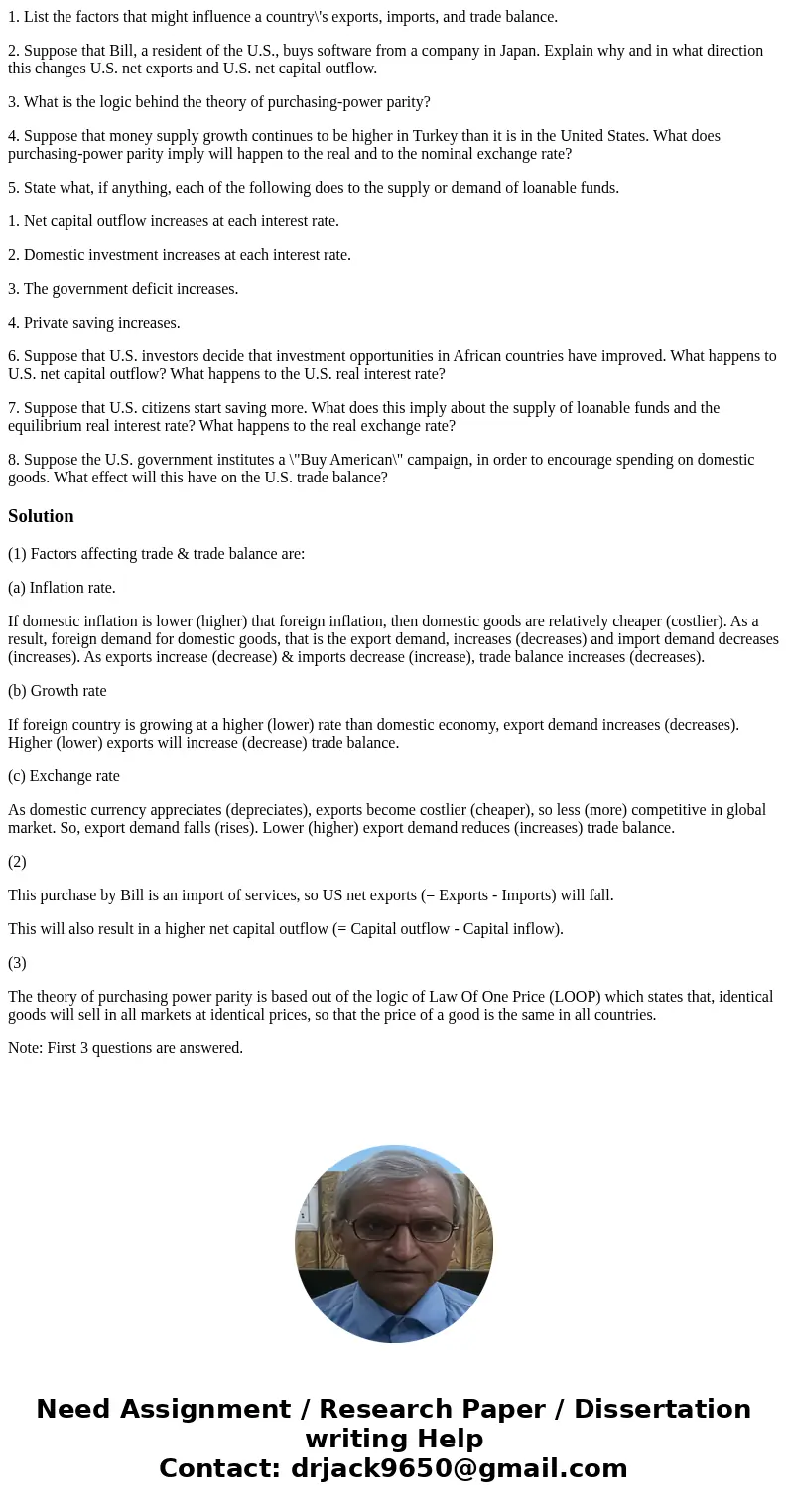1 List the factors that might influence a countrys exports i
1. List the factors that might influence a country\'s exports, imports, and trade balance.
2. Suppose that Bill, a resident of the U.S., buys software from a company in Japan. Explain why and in what direction this changes U.S. net exports and U.S. net capital outflow.
3. What is the logic behind the theory of purchasing-power parity?
4. Suppose that money supply growth continues to be higher in Turkey than it is in the United States. What does purchasing-power parity imply will happen to the real and to the nominal exchange rate?
5. State what, if anything, each of the following does to the supply or demand of loanable funds.
1. Net capital outflow increases at each interest rate.
2. Domestic investment increases at each interest rate.
3. The government deficit increases.
4. Private saving increases.
6. Suppose that U.S. investors decide that investment opportunities in African countries have improved. What happens to U.S. net capital outflow? What happens to the U.S. real interest rate?
7. Suppose that U.S. citizens start saving more. What does this imply about the supply of loanable funds and the equilibrium real interest rate? What happens to the real exchange rate?
8. Suppose the U.S. government institutes a \"Buy American\" campaign, in order to encourage spending on domestic goods. What effect will this have on the U.S. trade balance?
Solution
(1) Factors affecting trade & trade balance are:
(a) Inflation rate.
If domestic inflation is lower (higher) that foreign inflation, then domestic goods are relatively cheaper (costlier). As a result, foreign demand for domestic goods, that is the export demand, increases (decreases) and import demand decreases (increases). As exports increase (decrease) & imports decrease (increase), trade balance increases (decreases).
(b) Growth rate
If foreign country is growing at a higher (lower) rate than domestic economy, export demand increases (decreases). Higher (lower) exports will increase (decrease) trade balance.
(c) Exchange rate
As domestic currency appreciates (depreciates), exports become costlier (cheaper), so less (more) competitive in global market. So, export demand falls (rises). Lower (higher) export demand reduces (increases) trade balance.
(2)
This purchase by Bill is an import of services, so US net exports (= Exports - Imports) will fall.
This will also result in a higher net capital outflow (= Capital outflow - Capital inflow).
(3)
The theory of purchasing power parity is based out of the logic of Law Of One Price (LOOP) which states that, identical goods will sell in all markets at identical prices, so that the price of a good is the same in all countries.
Note: First 3 questions are answered.

 Homework Sourse
Homework Sourse